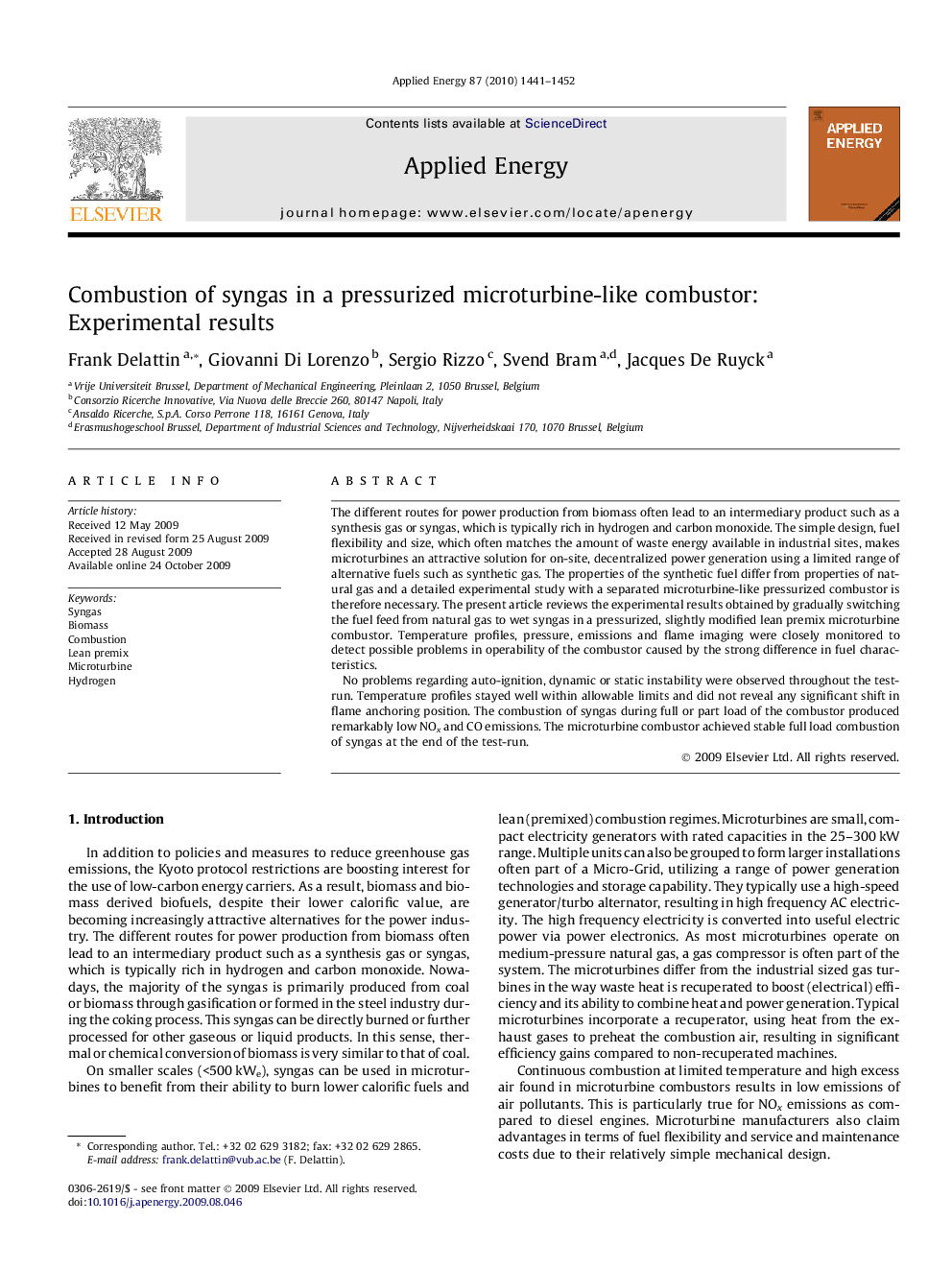| Article ID | Journal | Published Year | Pages | File Type |
|---|---|---|---|---|
| 244654 | Applied Energy | 2010 | 12 Pages |
The different routes for power production from biomass often lead to an intermediary product such as a synthesis gas or syngas, which is typically rich in hydrogen and carbon monoxide. The simple design, fuel flexibility and size, which often matches the amount of waste energy available in industrial sites, makes microturbines an attractive solution for on-site, decentralized power generation using a limited range of alternative fuels such as synthetic gas. The properties of the synthetic fuel differ from properties of natural gas and a detailed experimental study with a separated microturbine-like pressurized combustor is therefore necessary. The present article reviews the experimental results obtained by gradually switching the fuel feed from natural gas to wet syngas in a pressurized, slightly modified lean premix microturbine combustor. Temperature profiles, pressure, emissions and flame imaging were closely monitored to detect possible problems in operability of the combustor caused by the strong difference in fuel characteristics.No problems regarding auto-ignition, dynamic or static instability were observed throughout the test-run. Temperature profiles stayed well within allowable limits and did not reveal any significant shift in flame anchoring position. The combustion of syngas during full or part load of the combustor produced remarkably low NOx and CO emissions. The microturbine combustor achieved stable full load combustion of syngas at the end of the test-run.
